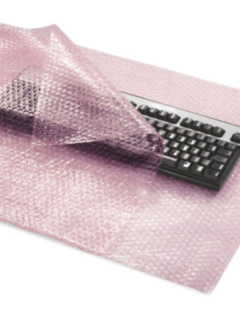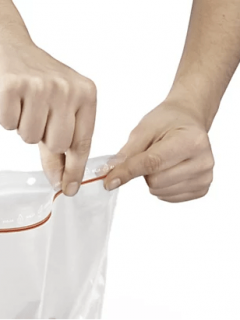The importation of goods from outside the European Union requires the completion of certain customs formalities, which include the inspection of the goods. This is known as customs clearance. We will give you a basic overview of what customs clearance is. You will also learn what customs clearance looks like – for both exports and imports.
Customs clearance – what is it? What does it involve?
Customs clearanceis the control of documentation and contents of goods crossing the border, as well as the collection of customs duties and taxes (the importer of the cargo is obliged to pay these fees). The details of the procedure during clearance are defined in the Value Added Tax Act of 11 March 2004. The customs control may cover the entire supply of goods or only parts of it. It takes place with or without the presence of the importer. Customs officers check the goods (declared for clearance). Customs control is necessary to secure the international movement of goods, in accordance with applicable laws and international agreements.
Types of customs clearance
There are different types of customs clearance. Most commonly we speak of:
- Temporary (conditional) customs clearance – this is carried out when the cargo returns across the customs border after some time (e.g. shipping goods to an international trade fair).
- Final customs clearance – the goods are only cleared once and are not sent out of the customs border again (happens most often).
- Deferred clearance – when a particular customs office is unable to carry out a proper check due to a lack of appropriate techniques; the check is then handed over to another customs office.
There is also a second way of splitting the customs clearance of goods. In this case, two eventualities will arise:
- Ordinary clearance – during which all customs procedures are applied and the complete set of required documents must be presented with the goods (in full).
- Simplified clearance – a procedure is performed here to speed up and facilitate customs clearance. Such control at the border is used by companies that appear trustworthy to customs. It is a typical procedure also for those companies that clear non-regulated goods. Simplified clearance can have two versions. The first, and most common, is the on-the-spot procedure, either at the warehouse or at the company’s premises. There is then no need to present the goods at customs, and transport time is saved. The second way is by presenting an incomplete customs declaration – this is used in exceptional situations.
When is the goods cleared through customs?
Customs clearanceis carried out both when goods are exported to a country outside the European Union and when they are imported from such countries. It is also a necessity for the international trade of goods with countries which, although belonging to the European Union, do not apply tax directives (e.g. Canary Islands). If you are considering how to send a parcel to England or how to send a parcel to the USA, you must take into account the need to pay customs duties and taxes, as well as the mandatory customs clearance.
All these rules are argued in Polish law by a very important piece of legislation concerning trade with a non-Community (non-EU) country – the Union Customs Code. It has been in force since 1 May 2016. It was created as a result of Regulation (EU) No 952/2013 of the European Parliament and of the Council of 9 October 2013.
What documents are necessary for customs clearance?
The import and export of goods that are subject to customs clearance requires the provision of a number of documents. Important ones include:
- goods list or specification of goods,
- import or export authorization,
- an invoice that confirms the value of the goods declared,
- waybill,
- data of the entity carrying out the loading and unloading,
- information on the place of origin and destination of the goods.
Other paperwork is also needed depending on the situation. In the case of imports, it is usually necessary to provide a CE certificate issued by the manufacturer of the goods. If there is an import of flora and fauna specimens, a CITES certificate, a veterinary certificate (so-called documents required under other legislation) must be delivered to the customs officers. In the case of transport by sea, a B/L or SWB document is also needed. For rail transport, a CIM/SMGS consignment note, and for air transport, an AWB transport document.
How does customs clearance work? Step by step
Customs clearance can be carried out in different ways – depending on the type of customs clearance, the type of goods being transported and whether the goods are exports or imports. Both electronic and traditional channels can be used.
Imports require more formalities than exports. In this case, a customs declaration is made during customs clearance. The importer must also attach the required documentation and pay customs duties, taxes.
The traditional customs declaration for imports requires the use of a paper form (SAD). If the electronic channel is chosen, this means that the customs declaration is made electronically (CELINA system). It is then also necessary to register on the Customs Electronic Services Platform and obtain an EORI number. This is a very important number. All EU traders are obliged to create one – just by registering in the EU customs system. It is useful for both imports and exports, as any registration in the ICT system is done using the EORI number.
Customs clearance for export is much simpler. First, an electronic customs declaration of the goods must be made in the ICT system ECS (Export Control System) with the message IE515. The exporter receives a Certified Customs Declaration, which shows the date and time of acceptance of the customs declaration, as well as information on the allocation of the customs clearance number (OGL). When the goods physically cross the border, an official confirmation of export of the goods is generated (document IE599), which forms the basis for the application of the zero VAT rate. No customs duties are also required when exporting cargo.
Wondering from what amount is customs clearance? For imported products, customs duty is payable if the value of the consignment exceeds €150.
How do I pack a consignment to get it through customs quickly?
An improperly packed and insecure consignment is not allowed to pass through customs. You can avoid this if you follow a few universal rules – regardless of the contents. An example? Read about shipping books abroad – packaging rules.
It is best to invest in durable and strong cardboard boxes made of sturdy 5-ply or 7-ply cardboard. Use good-quality parcel fillers (e.g. bubble wrap, flopak, eco-friendly air cushions, wrapping paper) to protect the contents from damage. Don’t forget to seal the carton tightly – packing tape will come in handy. The parcel can be additionally wrapped with stretch film (black, transparent, coloured) as a direct protection against moisture, dust, dirt. If the parcel is going abroad, you should mark it properly – with a courier label, warning labels.
You will find all the essentials among the wide assortment of the RAJA online shop. This is an unconventional company, which stands out from other companies in the packaging industry. Why? Well, it focuses on ecology, naturalness and sales ethics.














